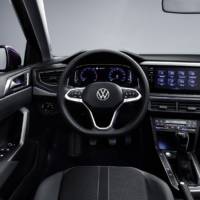We have already seen the first camouflaged images of the new RS 3 hot hatch. Now, Audi is sharing some more info about its powerful car.
The new Audi RS 3 represents the epitome of unadulterated driving dynamics. This is Audi’s first vehicle to feature the RS Torque Splitter, which distributes drive torque between the rear wheels in a fully variable manner. In combination with the 400 PS five-cylinder engine, the compact sports car is supremely agile. The 2.5 TFSI now unleashes 500 Nm of torque, 20 Nm more than in the previous model. The Audi RS 3 sprints from zero to 100 km/h (62 mph) in 3.8 seconds and reaches a top speed of 290 km/h (180 mph) – record numbers in the segment.
The RS Torque Splitter makes active, fully variable torque vectoring between the rear wheels possible. Unlike the rear axle differential and the previous multiple disc clutch package on the rear axle, the torque splitter uses one electronically controlled multiple disc clutch each on the respective drive shaft. During dynamic driving, the torque splitter increases the drive torque to the outer rear wheel with the higher wheel load, which significantly reduces the tendency to understeer.
In left-hand curves, it transmits the torque to the right rear wheel, in right-hand curves to the left rear wheel, and when driving straight ahead to both wheels. This results in optimal stability and maximum agility – especially when cornering at high speeds. When driving on closed roads, the torque splitter enables controlled drifts by applying all of the engine power to just one of the rear wheels – up to a maximum of 1,750 newton meters of torque. The exact distribution of drive torque always depends on the mode selected in Audi drive select and the respective driving situation.
The driving dynamics system Audi drive select in the new RS 3 offers seven modes: comfort, auto, dynamic, efficiency, as well as RS Individual, RS Performance und RS Torque Rear. Depending on the selected mode, the characteristics of important powertrain and chassis components change from an emphasis on comfort to highly dynamic to even optimized for the racetrack. In addition to the torque splitter, Audi drive select also has an effect on the engine and transmission characteristics, steering assistance, adaptive dampers, and exhaust flaps. Different characteristic curves for each of the aforementioned systems create a broad range of driving experiences.
In RS Individual mode, each system can be configured separately within its predefined characteristic curves. In Dynamic mode, all of the components are configured for a sporty ride. The driver feels this in a more direct steering response and particularly agile handling for dynamic driving with a clearly perceptible engine sound. The gearshifts of the S tronic are shorter, acceleration even sportier. The ultimate in driving dynamics can be experienced in Dynamic mode and in the new RS 3‑specific RS Torque Rear mode.



